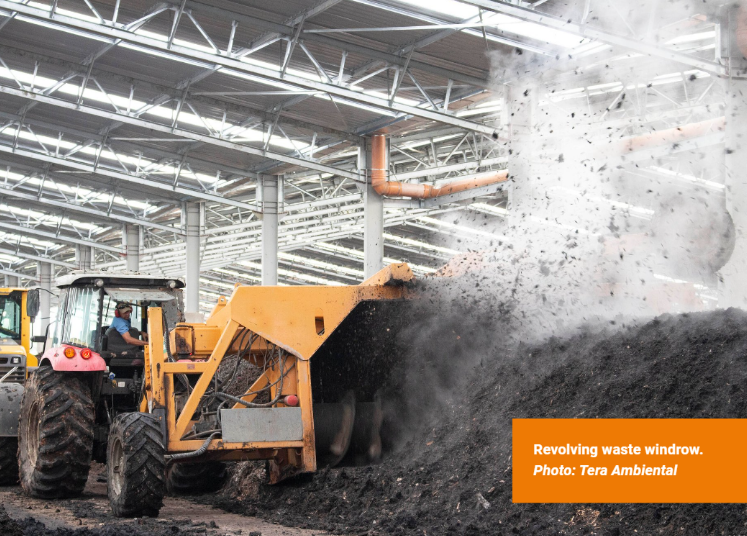
Exhibition time: 17-19 March, 2026 Shanghai, China
 中文
中文

Exhibition time: 17-19 March, 2026 Shanghai, China
 中文
中文
The current outlook for the Brazilian conventional fertilizer market is positive,albeit with a hint of caution.The year 2023 witnessed a recovery in product demand after a significant drop in 2022 due to soaring prices resulting from the conflict in Ukraine.Presently, prices are much lower than those observed in 2022,as reflected in the Rabobank Affordability Index.
"Our index reflects the purchasing power of producers, which is positive as of January 2024. However, we anticipate a challenging year ahead given the current results of the ongoing
crop ,”evaluates Bruno Fonseca, research and sector analysis analyst for the input market at Rabobank Brazil.
After a 10 percent decline in deliveries to the final consumer from 2021 to 2022, the market showed a considerable improvement,largely due to the drop in international prices.While final numbers for 2023 are not available, the disclosed figures until the end of October suggest that deliveries to the final consumer have a high likelihood of surpassing 44 million tons, representing a substantial growth over 2022.
For 2024, Fonseca projects another good year in terms of deliveries to the final consumer. "In Rabobank's view, we even have the conditions to exceed the 45.8 million tons delivered in 2021, the record to date.Despite the current situation of key crops in Brazil, such as the reduction in the soybean harvest, producers are expected to continue investing in fertilization in the upcoming season.We still have plenty of time until the next planting season in September,
but our outlook remains positive," he asserts.
Rise of biofertilizers
The Brazilian market for specialty fertilizers, in general, has been gaining considerable ground, and experts from Rabobank's input team anticipate this trend to persist, with excellent performance in this segment in the coming years.Among these, biofertilizers have come back into focus for producers after the excessive price hikes in conventional fertilizers since 2021.
"As an alternative, producers are paying more attention to biofertilizers. However, there are additional reasons for this increased attention," explains Fonseca.“As highlighted in our study published during the second half of last year,sustainability has played a significant role. With the adoption of biofertilizers, many producers are already moving towards regenerativ agriculture, a trend gaining traction in the sector that can bring not only financial gains through premiums but also productivity gains."
Although synthetic fertilizer prices returned to historical average levelsin 2023, the strictly economic rationale for increased use of biofertilizers might have weakened in the past year. However, according to the Rabobank expert, the demand for biofertilizers seems promising,as consumers are increasingly aware of the importance of food sustainability. Additionally, reducing the carbon footprint in agricultural activities is already a reality for the biofuel sector in the country and will likely become a priority for more agribusiness sectors shortly.
Raw material challenge
Composting, as a tool for biofertilizer production, has been gaining popularity, especially in regions with beef cattle feedlots.However, its implementation may be easier for those already practicing crop-livestock systems, while other activities may face challenges in the supply chain, such as availability and quality standards.
Among the study options for biofertilizers, composting was chosen because it is one of the most widely used methods by producers and generally has well-known processes.Another influencing factor was its adaptability to various regions. in the southern state of Minas Gerais, for example, various types of waste are used for compost production, including waste from various industries, forest residues chicken litter, dairy cattle manure,beef cattle feedlot manure,coffee straw and peanut shells,
among others.
"As an alternative, producers are paying more attention to biofertilizers."
A brief explanation of how the composting process works is warranted.This method aims to transform organic waste (manure,straw, sawdust) through the action of microorganisms into a nutrient-enriched product that can be used as organic fertilizer.
 The formation of composting piles in the composting yard is done through machinery, alternating layers of plant material (sugar cane bagasse, sawdust, or another carbon source) and bovine manure as a nitrogen source. The carbon/nitrogen(C/N) ratio is a crucial indicator of biological activity and is measured by the ratio between the total concentration of organic carbon and the total concentration of organic and inorganic nitrogen. The result is the amount of nitrogen available for the degradation of organic matter by microorganisms.
The formation of composting piles in the composting yard is done through machinery, alternating layers of plant material (sugar cane bagasse, sawdust, or another carbon source) and bovine manure as a nitrogen source. The carbon/nitrogen(C/N) ratio is a crucial indicator of biological activity and is measured by the ratio between the total concentration of organic carbon and the total concentration of organic and inorganic nitrogen. The result is the amount of nitrogen available for the degradation of organic matter by microorganisms.
The use of additives such as natural phosphate, besides being cheaper,can also provide secondary nutrients such as calcium,magnesium and manganese. The use of agricultural gypsum reduces ammonia losses through volatilization during the process.The decomposing microorganisms are aerobic,requiring an adequate amount of oxygen.This process also prevents the release of unpleasant odours and ensures homogeneous decomposition.lt's important to note that excess moisture, soil compaction and improper pile sizing can result in lower oxygen availability for decomposing agents and delay the maturation process,taking around three to six months,depending on environmental factors.
Moreover, the biofertilizer market is highly regionalized, adapting to different realities in Brazilian agriculture.The composition of biofertilizers can vary widely based on available waste, making them versatile but challenging in terms of raw material logistics and transportation."
From an economic analysis comparing costs between conventional fertilization and mineral fertilization plus compost, the latter tends to be more expensive but offers more benefits, such as higher productivity and improved soil quality. Economic viability varies with mineral fertilizer prices and the required productivity to offset additional costs," states Fonseca.
Benefits of biofertilizers
The benefits of biofertilizers go beyond economic aspects. They contribute to increased organic matter in the soil, improve water retention, and reduce the carbon footprint by transforming waste into valuable resources. The supply of raw materials for biofertilizer production is expected to continue growing, especially with animal production waste and urban waste.creating the potential to reduce the need for mineral fertilizer imports.
Biofertilizers also serve as soil acidity correctors, maintaining a pH of around 7.5, and enhancing microbial biodiversity and soil physical properties, facilitating root penetration and the adsorption of essential nutrients.
"We screened the host genome sequences for insights into how they can affect the microbiome."
Niuniu Ji. postdoctoral researcher, Kent lab
Another advantage of using biofertilizers is that, until now,feedlot waste was considered an environmental liability and needed proper treatment for disposal. With biofertilizers, this manure ceases to be an environmental liability for the property and becomes an input. In addition to this, the reduction in the carbon footprint with the replacement of mineral fertilizers by biofertilizers can be included.
However, Fonseca emphasizes that some disadvantages of this process also deserve attention: the logistical costs of collecting and storing organic waste, as well as its
application to the soil, are higher compared to synthetic fertilizers,which may limit the colection radius.In the case of cattle manure, there is seasonality in the quality of the compost during wet and dry periods. Another siqnificant risk is when the decomposition of organic matter is not completed, as it can increase the number of harmful microorganisms in the soil, such as Fusarium, for example. Additionally, there is a potential increase in weed incidence.
"Knowledge transfer, the development of more efficient systems, and certification/standardization are initiatives that would drive the biofertilizer market. Thus,biofertilizers should not completely replace mineral fertilizers, but they have the potential to complement them, contributing to the long-term sustainability and resilience of agriculture" says Fonseca.
Future trends
The supply of raw materials for biofertilizer production is expected to continue growing in the coming years. Brazil has the world's largest commercial cattle herd, and the trend of intensification in the activity is expected to maintain a positive potential for the construction of new animal feedlots.
In Rabobank's view, mineral fertilizers will continue to have the largest share in plant nutrition.However, 2022 taught that alternatives are needed for crisis moments, and the market is already demanding a shift to more sustainable sources. "In this way,combining these points, we understand that biofertilizers can gain a larger share in the national market, as well as specialty fertilizers, says Fonseca.
In his view, Brazil will continue to depend on imported fertilizers for some time.However, steps have been taken to reduce this dependence. in this context, the National Fertilizer Plan (PNF) launched in 2022 is a significant advancement for the sector,as well as its continuity after a change in government, demonstrating that the country truly understands the need for investment in this sector.
"A great success of this plan is not aiming for self-sufficiency, which isquite difficult to achieve given the level of demand in Brazilian agriculture, but rather seeking to significantly reduce externa dependence. For this reason, this plan must continue to evolve"concludes Fonseca.
Source from:NewAGInternational